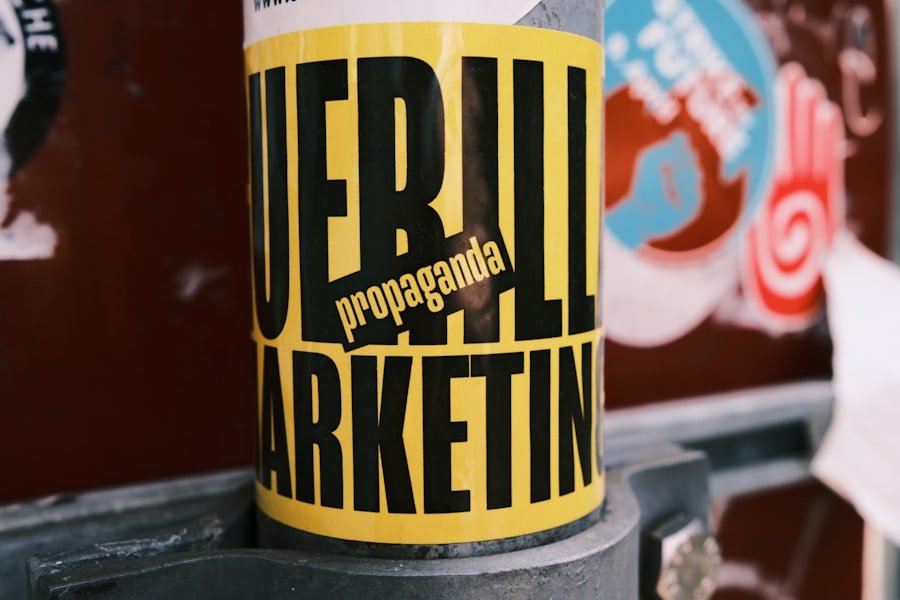In the fast-paced world of digital marketing, email remains a powerful tool for brands to connect with their audience. However, as inboxes overflow and attention spans dwindle, many marketers face the daunting challenge of re-engaging inactive subscribers. Understanding the nuances of email re-engagement is crucial for revitalizing your email marketing strategy.
It’s not just about sending a few reminder emails; it’s about rekindling interest and fostering a genuine connection with your audience. Re-engagement is more than a tactic; it’s a strategy rooted in understanding your audience’s behavior and preferences. According to a study by HubSpot, 45% of email recipients decide whether to open an email based on the subject line alone.
This statistic underscores the importance of crafting compelling content that resonates with your audience.
This data-driven approach allows you to tailor your messaging and increase the likelihood of rekindling interest.
Key Takeaways
- Understanding Email Re-engagement:
- Re-engagement emails are designed to win back inactive subscribers and rekindle their interest in your brand.
- It is important to understand the reasons behind subscriber disengagement in order to craft effective re-engagement strategies.
- Personalized Email Content:
- Personalization is key to re-engagement, as it helps to make the email content more relevant and appealing to the recipient.
- Utilize subscriber data to personalize the email content, such as using their name, past purchase history, or browsing behavior.
- Interactive Email Campaigns:
- Interactive elements like polls, quizzes, and surveys can help to re-engage subscribers by encouraging active participation and feedback.
- Interactive emails can also provide valuable insights into subscriber preferences and interests.
- Exclusive Offers and Promotions:
- Offering exclusive discounts, promotions, or rewards can incentivize inactive subscribers to re-engage with your brand.
- Limited-time offers and personalized deals can create a sense of urgency and drive action.
- Re-engagement Email Series:
- A series of re-engagement emails can be more effective than a single email, as it allows for a gradual approach to winning back subscribers.
- The series can include different types of content and offers to appeal to a variety of subscriber preferences.
Personalized Email Content
Personalization is no longer a luxury; it’s a necessity in today’s email marketing landscape. When it comes to re-engagement, personalized email content can significantly enhance your chances of capturing attention. By leveraging data such as past purchases, browsing behavior, and demographic information, you can create tailored messages that speak directly to the recipient’s interests and needs.
For instance, if a subscriber previously purchased running shoes, sending them an email featuring new athletic gear or exclusive discounts on related products can reignite their interest. Moreover, personalization extends beyond just using the recipient’s name in the subject line. It involves curating content that aligns with their preferences and behaviors.
A study by Epsilon found that personalized emails deliver six times higher transaction rates than non-personalized emails. This statistic highlights the power of personalization in driving engagement and conversions. By segmenting your audience based on their interactions with your brand, you can craft targeted campaigns that resonate on a deeper level, ultimately leading to higher re-engagement rates.
Interactive Email Campaigns

In an era where consumers crave engagement, interactive email campaigns offer a dynamic way to capture attention and encourage participation. These emails go beyond static content by incorporating elements such as polls, quizzes, and clickable images that invite recipients to interact directly within their inbox. For example, a fashion retailer might send an email featuring a style quiz that helps subscribers discover their ideal outfit combinations.
This not only entertains but also provides valuable insights into customer preferences. Interactive elements can significantly boost engagement metrics. According to research from Litmus, interactive emails can increase click rates by up to 73%.
By creating an immersive experience, you not only capture attention but also foster a sense of community and connection with your brand. As subscribers engage with your content, they are more likely to remember your brand and return for future interactions. Incorporating interactive elements into your re-engagement strategy can transform passive readers into active participants.
Exclusive Offers and Promotions
One of the most effective ways to entice inactive subscribers back into the fold is through exclusive offers and promotions. Everyone loves a good deal, and presenting your audience with limited-time discounts or special access can create a sense of urgency that compels them to act. For instance, consider sending an email campaign that offers a 20% discount on their next purchase for subscribers who haven’t engaged in the past three months.
This not only incentivizes action but also reinforces the value of being part of your email list. Additionally, exclusive promotions can be tailored to specific segments of your audience based on their previous interactions with your brand. For example, if you have a group of subscribers who frequently purchase beauty products but have been inactive lately, consider offering them an exclusive bundle deal on new arrivals.
By aligning your offers with their interests, you increase the likelihood of re-engagement while simultaneously driving sales.
Re-engagement Email Series
A well-structured re-engagement email series can be a game-changer for brands looking to revive dormant subscribers. Rather than relying on a single email blast, consider developing a sequence of targeted messages designed to gradually rekindle interest. Start with a warm welcome back message that acknowledges their absence and expresses your desire to reconnect.
Follow this up with personalized content that highlights new products or services they may have missed during their hiatus. The key to an effective re-engagement series lies in pacing and variety. Each email should build upon the last, offering fresh insights or incentives that encourage recipients to take action.
For example, if the first email features a special discount, the second could include user-generated content showcasing how other customers are enjoying your products. By creating a narrative that unfolds over several emails, you keep subscribers engaged while guiding them back toward active participation.
Survey and Feedback Emails

Valuing Customer Opinions
By asking for feedback on their previous experiences with your brand or what they would like to see in future communications, you demonstrate that you value their opinions and are committed to improving their experience. This approach not only fosters goodwill but also helps you refine your marketing strategy based on real customer input.
Encouraging Participation
For instance, consider sending an email that asks subscribers why they haven’t engaged recently and what changes would encourage them to return. Offering an incentive—such as entry into a giveaway or a discount on their next purchase—can further motivate participation.
Informing Future Campaigns
The data collected from these surveys can inform future campaigns and help you tailor content that resonates with your audience’s preferences.
Gamification in Email Marketing
Gamification is an innovative approach that can breathe new life into your email marketing efforts by making interactions more engaging and enjoyable. By incorporating game-like elements—such as challenges, rewards, or point systems—into your emails, you create an interactive experience that encourages subscribers to participate actively. For example, consider launching a “spin-to-win” wheel in your email where subscribers can win discounts or freebies by simply engaging with the content.
The effectiveness of gamification lies in its ability to tap into human psychology. According to research from Gartner, gamified experiences can increase engagement by up to 50%. By making re-engagement fun and rewarding, you not only capture attention but also foster loyalty among your audience.
Gamification transforms passive readers into active participants who are eager to engage with your brand repeatedly.
Behavioral Targeting and Segmentation
Behavioral targeting and segmentation are critical components of any successful re-engagement strategy. By analyzing subscriber behavior—such as past purchases, browsing history, and engagement levels—you can create highly targeted campaigns that resonate with specific segments of your audience. For instance, if you notice that certain subscribers frequently browse but rarely purchase, consider sending them tailored recommendations based on their interests.
Segmentation allows you to deliver relevant content that speaks directly to each subscriber’s unique preferences and behaviors. According to Mailchimp, segmented campaigns have an open rate 14% higher than non-segmented campaigns. By leveraging behavioral data to inform your targeting strategy, you increase the likelihood of re-engaging inactive subscribers while also enhancing overall campaign performance.
Re-engagement Email Automation
Automation is a powerful ally in the quest for re-engagement. By setting up automated workflows triggered by specific subscriber behaviors—such as inactivity over a certain period—you can ensure timely and relevant communication without manual intervention. For example, if a subscriber hasn’t opened any emails in three months, an automated re-engagement campaign can be triggered to remind them of the value they’re missing out on.
Automated re-engagement emails can be personalized based on subscriber data, making them more effective at capturing attention. According to research from ActiveCampaign, automated emails have an open rate of 70% higher than traditional emails. By harnessing automation technology, you streamline your re-engagement efforts while maintaining a personal touch that resonates with your audience.
User-Generated Content in Emails
User-generated content (UGC) is a powerful tool for building trust and authenticity in your email marketing campaigns. By showcasing real customers using or enjoying your products, you create relatable content that resonates with potential buyers. Incorporating UGC into your re-engagement emails not only highlights social proof but also encourages inactive subscribers to reconnect with your brand.
For instance, consider featuring customer testimonials or photos in your re-engagement campaigns. This approach not only reinforces the value of your products but also fosters a sense of community among your audience. According to Nielsen, 92% of consumers trust recommendations from individuals over brands—making UGC an invaluable asset in driving re-engagement.
A/B Testing and Optimization for Re-engagement Emails
A/B testing is an essential practice for optimizing your re-engagement emails and ensuring maximum effectiveness. By testing different subject lines, content formats, calls-to-action (CTAs), and send times, you can identify what resonates best with your audience and refine your approach accordingly. For example, if one subject line yields significantly higher open rates than another, it’s clear which direction to pursue in future campaigns.
Continuous optimization through A/B testing allows you to stay agile in response to changing consumer preferences and behaviors. According to Optimizely, companies that engage in A/B testing see conversion rates increase by up to 300%. By committing to ongoing testing and refinement of your re-engagement strategy, you position yourself for sustained success in capturing the attention of inactive subscribers.
In summary, revitalizing inactive subscribers through effective email re-engagement strategies requires a multifaceted approach rooted in personalization, interactivity, and data-driven insights. By leveraging techniques such as exclusive offers, user-generated content, and behavioral targeting, brands can foster meaningful connections with their audience while driving conversions. As we look ahead, it’s clear that the landscape of email marketing will continue to evolve.
Embracing innovative strategies like gamification and automation will be essential for staying ahead of the curve in engaging subscribers effectively. The future belongs to those who adapt quickly and leverage data-driven insights to create compelling experiences that resonate with their audience—ensuring that no subscriber is left behind in the digital noise.
If you’re looking to re-engage subscribers through email marketing, you may also want to consider implementing marketing automation and CRM systems. This related article on marketing automation and CRM implementation by Polayads discusses how these tools can streamline your marketing efforts and help you better target and engage with your audience. By utilizing automation, you can create personalized and timely email campaigns that are more likely to re-engage subscribers and drive conversions.
FAQs
What is email re-engagement?
Email re-engagement is the process of reaching out to inactive or disengaged subscribers in an effort to rekindle their interest in your email marketing campaigns. This can involve sending targeted content, special offers, or personalized messages to encourage subscribers to re-engage with your brand.
Why is re-engaging subscribers important?
Re-engaging subscribers is important because it helps to maintain a healthy email list and improve overall email marketing performance. By re-engaging inactive subscribers, you can potentially win back lost customers, increase brand awareness, and improve your email deliverability and open rates.
What are some creative email marketing ideas to re-engage subscribers?
Some creative email marketing ideas to re-engage subscribers include sending personalized content based on their past interactions, offering exclusive discounts or promotions, hosting a re-engagement campaign with a series of targeted emails, conducting surveys to gather feedback, and using interactive content such as quizzes or polls.
How can I segment my email list for re-engagement campaigns?
You can segment your email list for re-engagement campaigns based on various criteria such as engagement level (e.g., inactive subscribers, moderately engaged subscribers), purchase history, demographics, or specific actions taken on your website or previous emails. This allows you to tailor your re-engagement efforts to different groups of subscribers.
What are some best practices for re-engagement email campaigns?
Some best practices for re-engagement email campaigns include crafting compelling subject lines and content, using a clear call-to-action to encourage subscribers to take a specific action, offering something of value to entice re-engagement, and setting up a series of emails to gradually re-engage subscribers over time.
How can I measure the success of my re-engagement campaigns?
You can measure the success of your re-engagement campaigns by tracking metrics such as open rates, click-through rates, conversion rates, and the number of subscribers who re-engage with your brand after receiving your re-engagement emails. Additionally, you can monitor changes in overall email engagement and purchase behavior.



